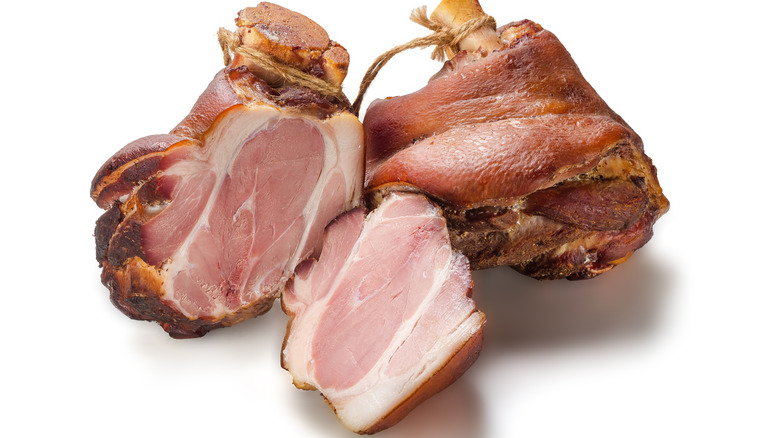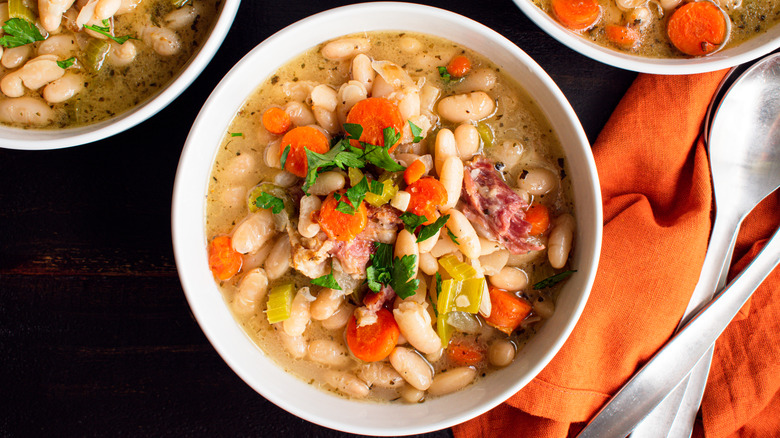What's The Best Method For Cooking Ham Hocks?
Ham is one of those ingredients that could accurately be described as an old reliable standard. Used in sandwiches, soups, and casseroles, it can go in pretty much everything. "Ham hocks," meanwhile, is a funny-sounding term — it's only a short distance from something like "pork honks" — but ham hocks are actually a surprisingly valuable ingredient (both in terms of flavor and cost) for more dishes than you might think. And you should definitely consider using them more often.
The best way to cook ham hocks is similar to a lot of other bone-in meat products: Take your time. Like many meats that people often overlook, you can't — or at least shouldn't — rush ham hocks. The key with cooking them is to go slowly. They react particularly well to being braised over a duration of hours and, since all you really need to do is drop them in a pot and let them simmer, they're not exactly labor-intensive. Plus, if they're frozen, you don't even need to thaw them before you start cooking.
What exactly is a ham hock?
Hilarity of the term "ham hocks" aside, you may be wondering what a ham hock actually is. The answer to that question, it turns out, is also why a ham hock needs to be cooked slowly. It's not an ankle, per se, but it serves a similar purpose for hogs, connecting the shank to the foot. As such, ham hocks have a ton of collagen, a structural protein in connective tissue — and collagen has huge food applications. Gelatin is what happens when collagen is exposed to hydrolysis, which is the chemical breakdown of a compound resulting from a reaction with water.
The best uses for ham hocks are thus for dishes like fresh butter bean and smoked ham hock soup, where that breakdown of collagen thickens and imparts body into the liquid stock. This is why you want to go slowly with them. Because the collagen takes time to break down and provide its savory goodness, you don't want to rush the process.
Ham hocks are also wildly affordable
Although ham hocks certainly add a ton of flavor, that's not the only thing they bring to the table. They're actually extremely affordable, often cheaper by weight than bacon (as observed by publications like America's Test Kitchen) while serving the same purpose for soups and stews. As food prices are a constant concern for many consumers, this makes them a great way to give dishes a savory pop at an affordable price.
Ham hocks actually used to be a lot more popular than they are now — hence why you've likely heard of them, even if you've never used them. They've long been a key component in Southern American cooking, especially soul food, but as such, they're also associated with old-timey cuisine, which people frequently paint with an unappetizing brush. The good news is that this fall in popularity is likely why they're so cheap — so you should consider getting them while the getting is good.


